Ever so slowly and inch by inch, the little brick house moved off the wooded lot where it had stood for 83 years.
Looking for all the world like a storybook cottage on wheels, the house on a dolly was pulled west by a front-end loader along Napoleon Boulevard on Thursday, August 20 to its new location four blocks away. It will be placed on a new foundation at the southwest corner of Napoleon and Hill Street.
And thus a small piece of history with a Notre Dame origin story was saved from demolition.
The house at 1126 North Frances Street was built in 1937 for Thomas Bowyer Campbell, a writer and Catholic convert who taught at Notre Dame from 1931 until the mid-1940s. It looks nothing like other Depression-era houses in South Bend because it took its design from the antebellum summer kitchen of a Southern mansion where Campbell lived during his childhood.
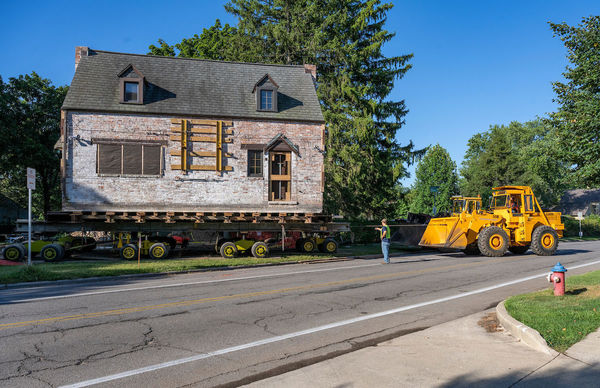
|
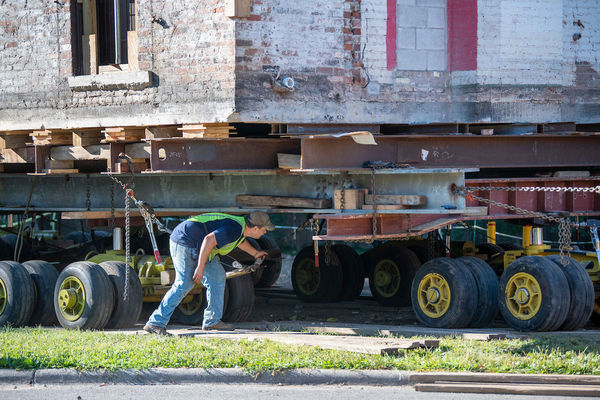
|
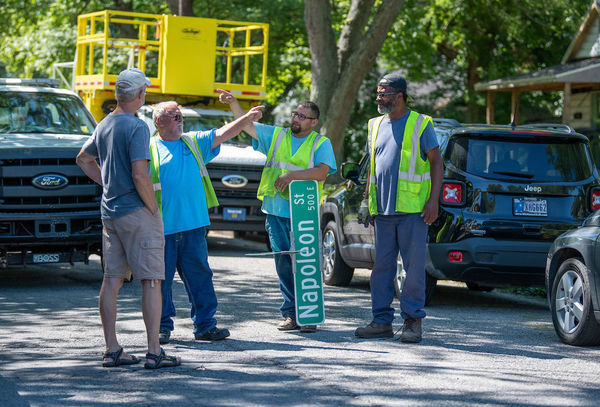
|
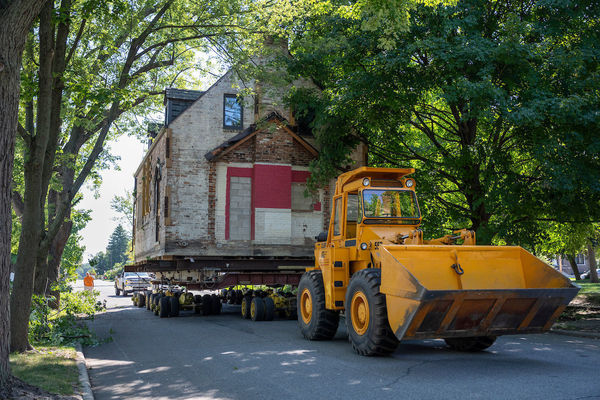
|
With dormer windows and two chimneys, the house is made of limewashed red brick — its walls three bricks thick. The interior walls are exposed brick with pine paneling and trim. It has three cozy wood-burning fireplaces: One in the downstairs parlor and one in each of the upstairs bedrooms.
The ivy-covered house sat on a double lot with an abundance of trees and shrubs shading the backyard. “When you went back there, it was a different world, a fairyland. It had a ‘Secret Garden’ feel to it,” said Mia Martin, the daughter of Kamilla Kapacinskas, the longtime owner who last year reluctantly sold the property.
Martin retains the original flyer advertising the house that her father saw posted in the Notre Dame library in the 1970s. “For sale: Brick ‘English Style Cottage’,” it reads. She still remembers the childhood excitement of having a fireplace in her bedroom, which made her feel like a girl in a novel.
Martin moved into the house with her parents and brother in 1976, while her father, Thomas Kapacinskas ’63, ’68J.D., was teaching at Notre Dame. Her parents later divorced, but Martin, her mother and her brother made the house their home. (Thomas Kapacinskas passed away August 14 at age 78. He is survived by his wife, Judith Robert ’77.)
Martin’s parents bought the house from a local family who had owned it since 1950 and who had purchased it from Campbell, the original owner. Campbell was born in 1887 and grew up in Bedford, Virginia. The home he had built for himself in South Bend was modeled after a summer kitchen house that formerly stood on the property of Avenel, a circa-1836 former plantation in Bedford.
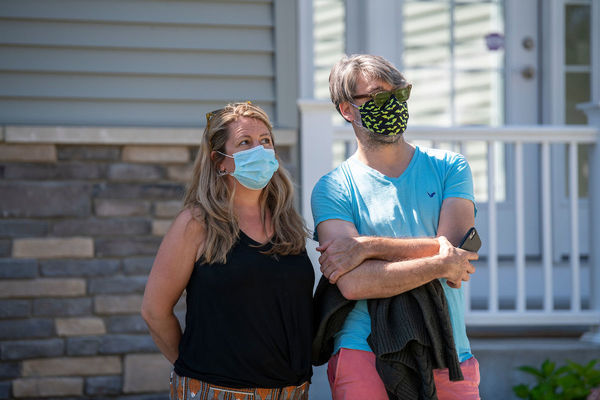
|
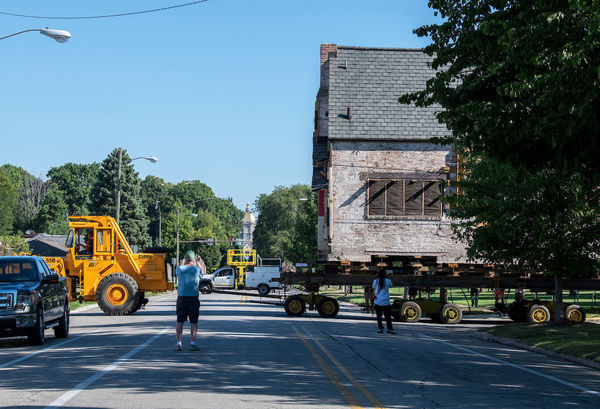
|
The South Bend house was constructed in 1937, according to historical documents in Mia Martin’s possession. The 1970s for-sale flyer stated the house was made from bricks salvaged from a demolished Notre Dame campus building. Campbell purchased the vacant lot for his future home from Notre Dame for $1, according to a deed Martin holds.
Kamilla Kapacinskas said she knew the first time she saw the house in the early 1970s that she wanted to live there. “I wanted a house that looked and felt like a cottage,” she said.
When her husband saw the advertisement posted in the campus library, Kapacinskas said, it felt like she was destined for the house. “I don’t see it at all as a coincidence,” she said. “I see it as meant to be.”
She added, “I felt constantly lucky and blessed living there. I thought of it as a living thing.” She noted that the house is made only of brick and wood, materials from the earth, and it feels like a part of nature.
Over the years, Kapacinskas created a woodland garden, complete with a pond, in the secluded backyard. She planted flowers in the flower boxes at the front windows and hosted poetry readings in the parlor. It was a small oasis in the midst of an urban neighborhood.
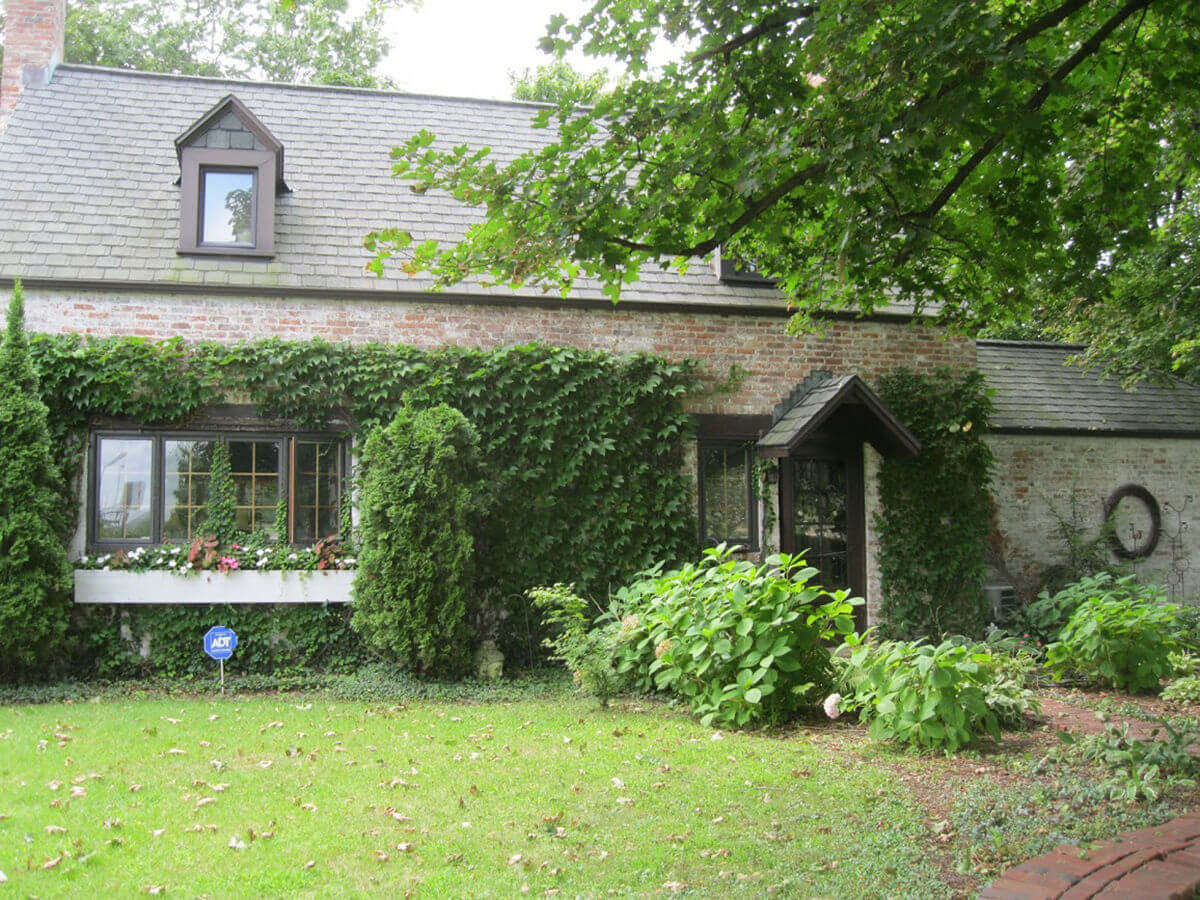
After more than 40 years in the little house, Kapacinskas reluctantly decided last year she needed a place to retire that required less maintenance. She sold the property and moved to a condominium in Mishawaka. It was a hard decision. ‘“For a long time, I felt like I was betraying a friend,” she said of her former home.
She sold the property, which is slated for future residential development, with the condition that the family could save and move the house if arrangements could be made. Martin and her husband, Eric, who live in Bloomington, Indiana, took on the challenge. They purchased a new lot and made plans for the house to be moved, and for a careful renovation and expansion that will provide additional living space and preserve the house’s historical character.
“For the last 15 years, I’ve wanted nothing more than to help my mom fix it up,” Mia Martin said. “She is really motivated by things that are beautiful.”
The Martins may move to South Bend and live in the house. Or they may sell it. The goal, Mia Martin said, was to save it.
In the mid-20th century, an additional bedroom and bathroom were added to the home’s west side, and a solarium was added to the east side. Both were in declining condition and were demolished before the house was moved.
That downstairs bedroom was rented out to Notre Dame student boarders during some years her family lived there, Martin said.
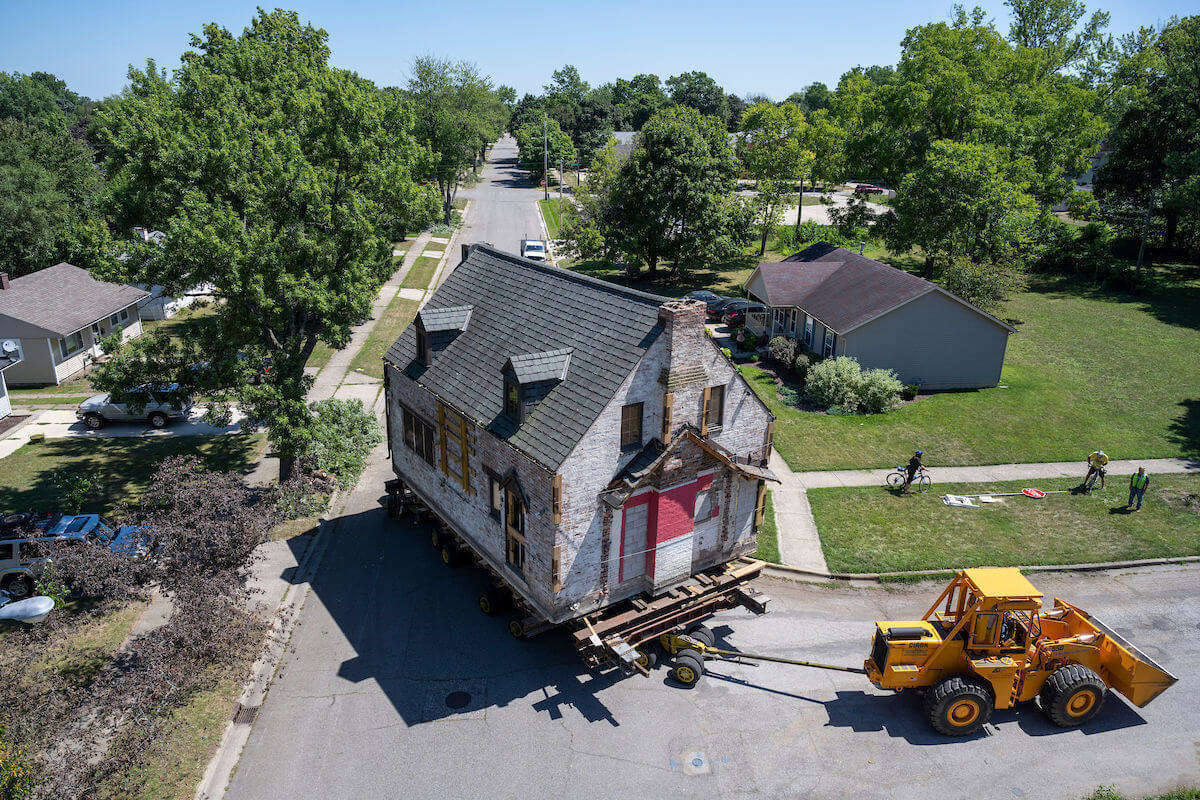
Campbell — the home’s original owner — grew up Protestant, attended the College of William and Mary and then a seminary, and became an Episcopal cleric. He served at a mission in China, as an assistant rector of an Episcopal church in Baltimore and also spent a few years living and writing in England. In the 1920s, he wrote several novels, including Black Sadie and Old Miss.
In 1931, he converted to Catholicism. His brother, John Campbell, was a professor at Notre Dame, and Thomas Bowyer Campbell in 1931 came to live in South Bend and teach in the University’s history department. In 1935, he was appointed acting dean of the College of Arts & Letters.
Campbell continued teaching at Notre Dame until taking a leave of absence in 1945. “(World War II) came and the accelerated program at Notre Dame to pressure-train officers for the Navy. I began to sink under the strain and just as the War ended I had a nervous breakdown. The only cure was retirement. I cut loose from Notre Dame, having developed a strong allergy for that institution,” Campbell wrote in a short autobiography that is posted at CatholicAuthors.com.
Campbell later taught at St. Bede College in Peru, Illinois, and retired to his hometown in Virginia. He died in 1976 at age 88.
The ruins of the brick kitchen house still were visible at Avenel as recently as 1992, but are no longer there, an Avenel historian told Mia Martin. The mansion itself still stands and is rented out for weddings and other events.
Martin and her mother are satisfied they were able to arrange to move the house and save a piece of local history.
“I’m so happy it’s not being torn down,” Kapacinskas said. “I don’t know if there is another house like it.”
Margaret Fosmoe is an associate editor of this magazine.